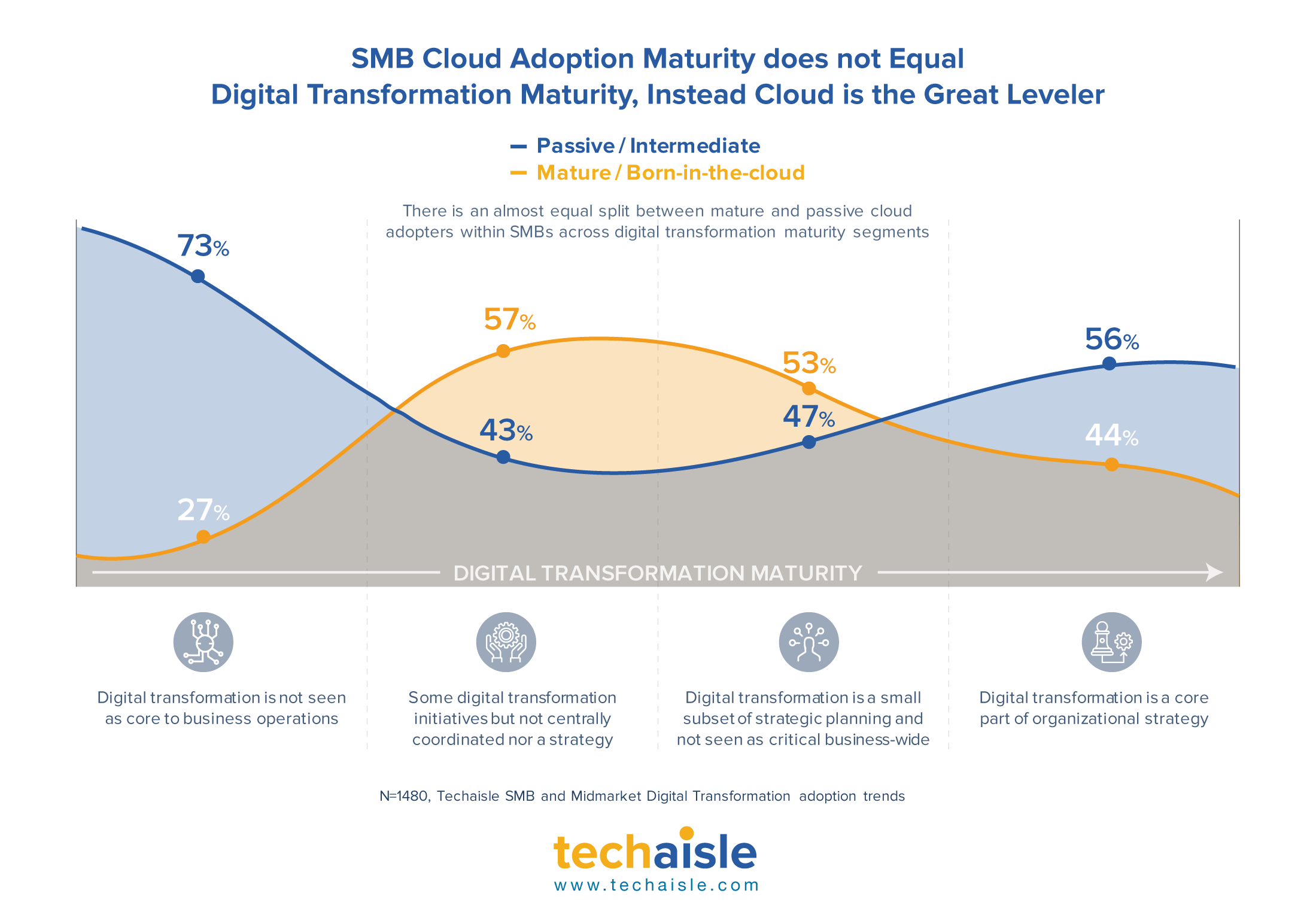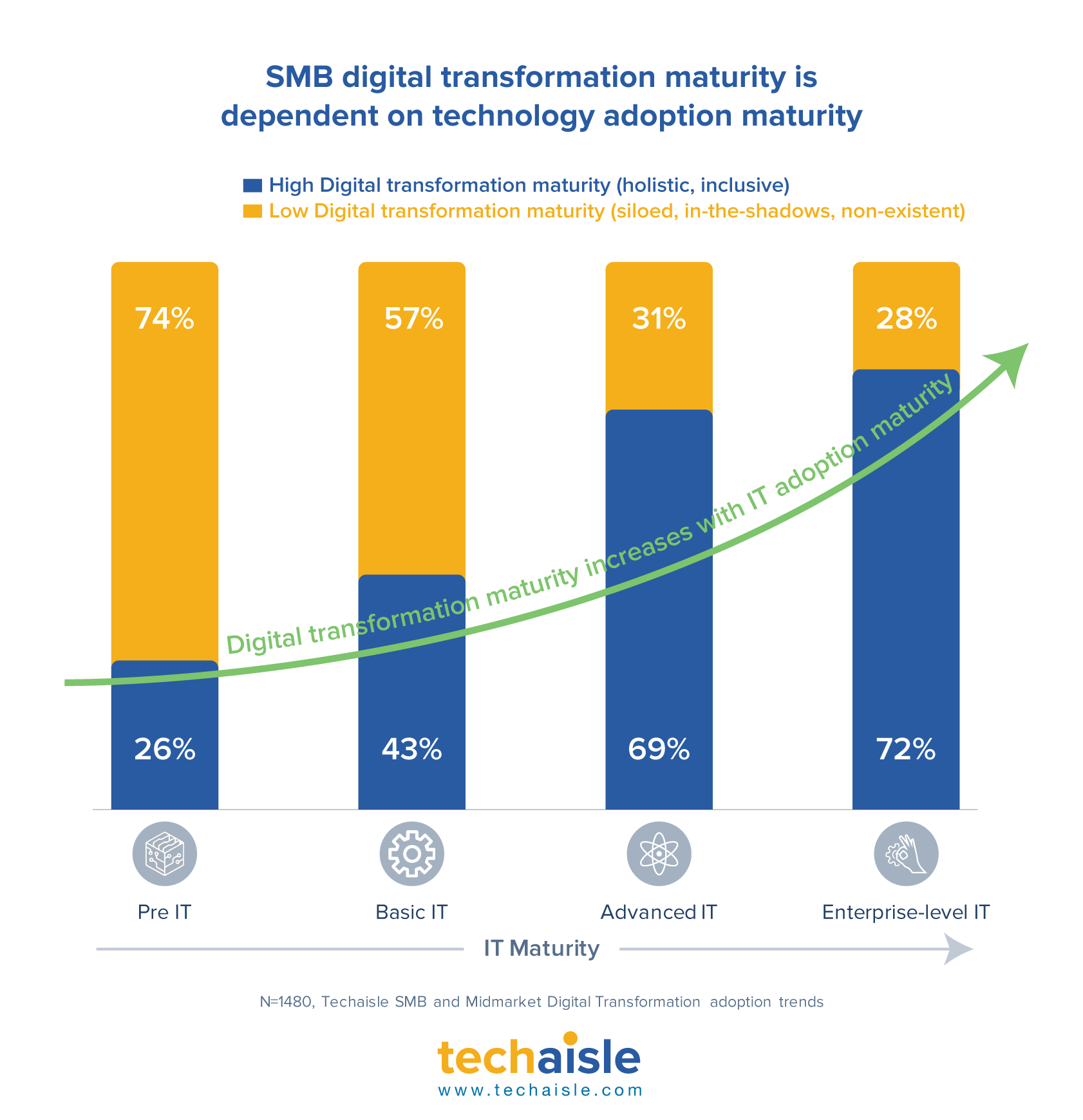79% of US SMBs are either in the planning stage for digital transformation or have a formal strategy but only 19% are actively following through. Small businesses are behind midmarket firms. 29% of small businesses have no ongoing digital transformation strategy as compared to 9% of midmarket firms. As a result, there is a growing digital divide in the SMB segment and most SMBs need guidance in building a vision that involves separating digital transformation components into two nested and complementary ladders, one focused on technology, and second, focused on business outcomes.
The figure below presents a single-image depiction of these twin ladders of digital transformation. The bottom set of steps is labeled “the technology ladder,” and stretches from the deployment of modern, flexible infrastructure to advanced IT-enabled capabilities. The building blocks that are needed to establish an infrastructure that is capable of supporting digital transformation include mobility, virtualization, hyper-converged infrastructure, and other technologies essential to provisioning advanced IT services. These building block technologies are an essential foundation for digital transformation but deliver modest discrete value. The point automation solutions positioned at the base of the business outcomes ladder provide rapid but limited benefit through substitution and augmentation.

















